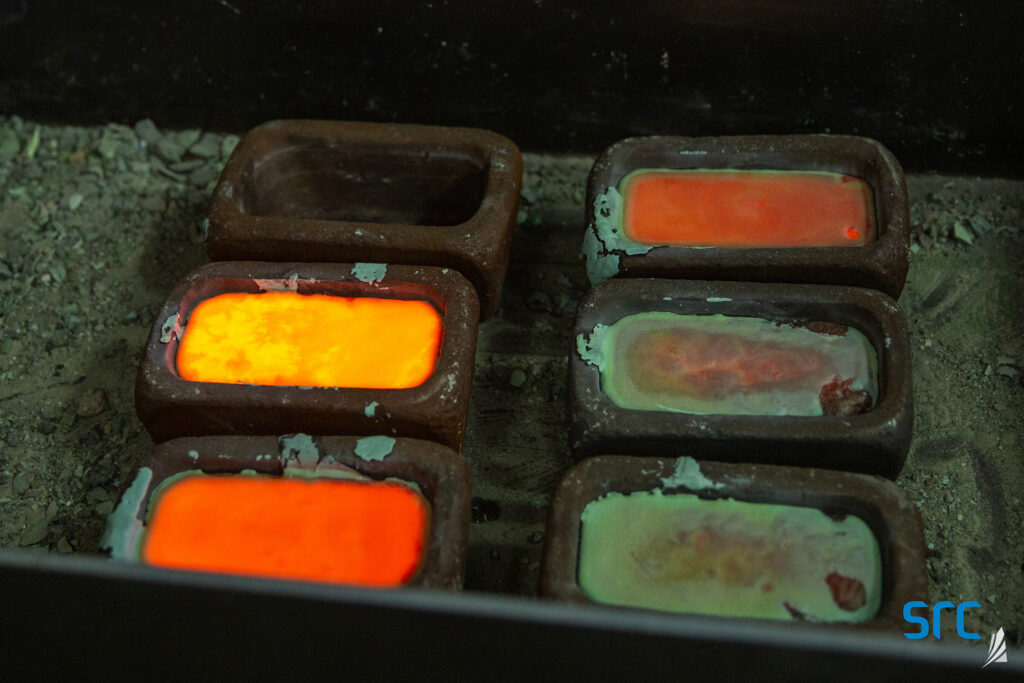Raring to go: a foundry for the future
When the Saskatchewan Research Council recently announced it had produced Canada’s first ever rare earth metals ingots, a key ingredient used to manufacture permanent magnets for electric vehicles, it probably should not have been a surprise to anyone.
The Saskatchewan government has been a leader in developing a domestic rare earth element supply chain to help reduce Canada’s dependence on imported rare earths used in everything from electric vehicles and laptop computers to wind turbines. Today, 80-90 percent of these imported elements come from China.
“It is critical that we develop this upstream, midstream, and downstream supply chain for rare earth minerals,” said Mike Crabtree, president and chief executive officer of SRC, which owns and operates the plant. “It's difficult to overestimate how important [it is],” he said. “Because if we do not, then we will be — as we are now — fully dependent on other jurisdictions for the supply of these minerals.”
Through the SRC, the province invested $51 million from general revenues into a rare earth minerals-to-metals processing facility in Saskatoon that will be fully operational by the end of 2024. Roughly 50 kilograms of metals were produced in a test run of the smelting unit, which is still under construction.
“What we want to do is demonstrate that fully integrated midstream capability,” said Crabtree.
The plant, the first of its kind in Canada — and possibly North America — aims to attract private industry and spawn a new industrial sector in the province. While in the future some companies will be fully integrated with their own mine and midstream facilities, other companies may look to the SRC to process their minerals.
The SRC plant’s first phase, the monazite processing unit (MPU), will be operating about a year from now, with the full plant including the separation and metals unit in operation about a year later. The vertically integrated system will take about 3,000 tonnes of monazite ore, a rare earth phosphate mineral, and from that create about 1,500 or 1,600 tonnes of rare earth elements. Of that, about 300 tonnes of neodymium and praseodymium would be made into metals for magnets.
There are significant deposits of rare earth across Canada, and while producers are looking to explore, delineate, and develop those resources, Crabtree indicated that it could take up to 10 years to see that kind of progress.
“What we wanted to do is to ensure that that midstream, that capability for processing those resources, would take place as these resources come on-line,” he said. “That would justify their investments.” In the meantime, the plant is sourcing monazite from overseas to enable it to get the plant up and running for domestic Canadian supply.
As the actual physical quantities of resources are remarkably small in minerals terms, it does not make sense to have refining and midstream capabilities in all provinces, according to Crabtree. Rather, concentrated minerals from across Canada, after initial processing, would be processed in Saskatchewan, where there are economies of scale, technology and innovation.
Saskatchewan already has the mining expertise. As a nuclear province it is also well placed to manage products such as monazite that have radioactive components such as uranium and thorium within them that have to be separated out and dealt with, said Crabtree. “In other provinces they may be considered waste materials but in Saskatchewan they are considered raw materials.”
Becoming commercially competitive
The SRC project initially consisted of the MPU and a separations unit, slated to take monazite as the primary mineral and convert it to mixed rare earth oxides, which would then be separated into the individual oxides. The province subsequently provided additional funding for a metals smelting unit. According to Crabtree, the finished plant will be the most environmentally sustainable on the planet.
“We use vast amounts of water but not one single drop of water or chemicals will be discharged from the plant,” he said. “Everything is recycled and reused.”
Although in the future the public will demand electric vehicles from environmentally sustainable sources, in the early stages — likely through the mid 2020s and into the late 2020s — “we will not get one cent more for our environmentally sustainable product, compared to other jurisdictions,” said Crabtree.
“We have to be equally commercially viable with the environmentally sustainable materials as with the conventional,” he said. “Otherwise, we're not going to get the commercial momentum.”
The growing demand for such advanced manufacturing products is expected to result in substantial value added opportunities for Canadians.
The price for monazite is about $5,000 to $10,000 a tonne, but once processed through the first stage MPU, the resulting mix and oxides are worth an estimated $20,000 to $40,000 a tonne. When separated into individual rare earths, prices can range from $10,000 to $2 million per tonne, while metal ingots for magnets fetch anywhere from $150,000 to $200,000 a tonne.
Up until now, no federal funding has gone into the SRC facility. Crabtree, though, said he hopes there will be an investment opportunity to further expand the plant’s capability. “I think there is a growing recognition at both the provincial and the federal levels that there is a need to really move forward with this plant,” he said. “It’s important the federal [government] and the province are working together for the strategic nature of this is very important.”
In the meantime, Cheetah Resources Corp. owned by Australia’s Vital Metals, became Canada’s first rare earths producer in June 2021, when the company began production of mixed rare earth bastnaesite ore at its Nechalacho project in the Northwest Territories.
In a new process that does not require water, ore is crushed into gravel-sized pieces and run past a sensor that separates out the much heavier and denser rare earth ore. The concentrate is then shipped to Saskatoon where Vital is building a facility to refine it for market. The refined product goes to customers in Norway, where the individual minerals will be separated from each other and processed into ingots.
R$
| Organizations: | |
| People: | |
| Topics: |
Events For Leaders in
Science, Tech, Innovation, and Policy
Discuss and learn from those in the know at our virtual and in-person events.
See Upcoming Events
You have 1 free article remaining.
Don't miss out - start your free trial today.
Start your FREE trial Already a member? Log in
By using this website, you agree to our use of cookies. We use cookies to provide you with a great experience and to help our website run effectively in accordance with our Privacy Policy and Terms of Service.






